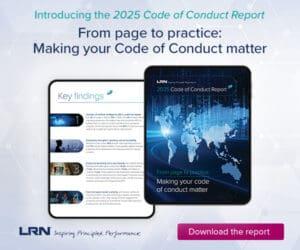Using Analytics to Gain a Competitive Edge
Predictive analytics is quickly changing the way businesses effectively allocate their budgets and gain their edge over competitors. However, even companies with highly sophisticated predictive analytics programs still often run into challenges. Here are some ways to leverage your predictive analytics model by Kris Hutton, Director of Product Management at global enterprise governance SaaS provider ACL.
A growing number of companies are taking their predictive or advanced analytics strategy to a new level. They have settled on proof of concept and started to execute on a model designed to predict future targets that can help them either create value or identify loss. These areas run the gamut, from marketing campaigns to sales to supply chain and/or vendors.
In a hypercompetitive business environment, predictive analytics is fast becoming a way for organizations to gain an edge over competitors and allocate budgets more effectively.
However, even for companies with highly sophisticated predictive analytics programs, challenges abound. Here are three ways to sustain the effort and ensure it’s generating positive returns.
Respecting Data Privacy and Ownership
This is perhaps the most complicated aspect of managing data for global or multi-regional organizations with mature and advanced analytics strategies.
The main consideration is whether you have permission to move or use the massive amounts of data you compile every day. The General Data Protection Regulation (GDPR) and similar data privacy regulations impose strict rules on controlling and processing personal data; this includes everything from your CRM system to vendors to customer usage.
Improving Usability & Complexity of the Predictive Analytics Model
Model bias is a serious enterprise risk, particularly in the financial services sector. Financial services firms should use model risk management to apply governance rigor to their models to ensure they are making accurate assumptions.
Building models and managing data warehouses and data lakes is often best left to data scientists or other analytic experts. However, the technology ultimately exists to provide your front lines with the real-time intelligence they need to improve performance.
Creating processes with smart feedback loops is a matter of treating the nexus of your strategy with people, process and technology. An effective analytics strategy can provide invaluable insight and competitive differentiation. Once you reach that point, usability is more easily resolved.
Conditioning the Workforce
While continuing to recruit senior data analytics executives to drive the overall strategy, it’s crucial for companies to encourage their entire workforce to think about data analytics more frequently and strategically.
Algorithms, machine learning and artificial intelligence (AI) will continue to steer data analytics to the core of the company. And while not everybody needs to be a data scientist, almost everybody needs to be well versed in the digital lexicon.
Management needs its workforce to have the necessary skills to ensure technology is free from bias. Those brands that invest in data will get a leg up on the competition and be much better prepared for an increasingly post-digital age.



 Kris Hutton is the Director of Product Management at
Kris Hutton is the Director of Product Management at 







